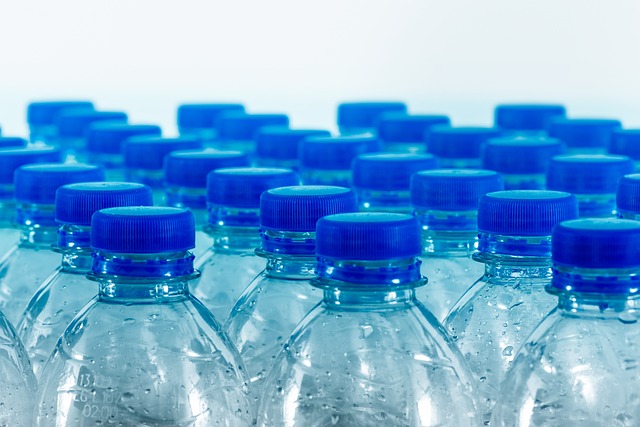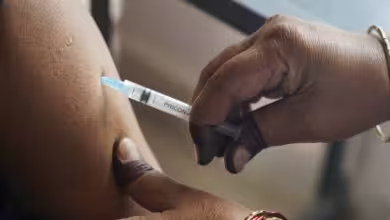Study says bottled water contains hundreds of tiny plastics
These minute particles, different from their larger counterparts known as microplastics, share a size akin to viruses, posing a potential threat to the normal functioning of human cells.

In a recent study conducted by Columbia University and published in the Proceedings of the National Academy of Sciences, researchers made a concerning discovery – your average water bottle is hiding a silent threat. A whopping quarter million bits of “nanoplastics,” tiny enough to rival viruses, were found in every bottle. These minute particles, different from their larger counterparts known as microplastics, share a size akin to viruses, posing a potential threat to the normal functioning of human cells.
Beizhan Yan, a researcher from Columbia University, stressed that while we already know about microplastics in the environment because they’re quite big and can be seen with a special microscope, this study goes deeper into something called nanoplastics. These are way smaller—thousands of times tinier—measured in billionths of a meter. Yan says the smaller the particle, the easier it is for them to get inside our bodies, crossing different barriers and possibly causing issues in our cells.
The concern over nanoplastics extends beyond their size. A separate study by The Lancet, released in December, highlighted the hazardous impact of both nanoplastics and microplastics on the human body. The researchers behind the study listed a range of potential health issues, including oxidative stress, inflammation, immune dysfunction, altered biochemical and energy metabolism, impaired cell proliferation, disrupted microbial metabolic pathways, abnormal organ development, and even carcinogenicity.

The PNAS study, however, takes a step further by using a new method of laser imaging to identify the specific plastic polymers entering our bodies. The researchers ran water from three common brands through an extremely fine-grained filter, trapping particles measurable on a scale of billionths of a meter. Surprisingly, only 10% of the total nanoparticles discovered were identified, indicating the presence of unidentified particles such as microscopic clays, metals, and degraded plastics that imaging technology could not detect.
Chemical structure emerges as a major concern in the study. The authors note that plastics with a chemical composition similar to living creatures can mimic key biological processes and imitate chemical messengers in the human body. Among the plastics identified in the bottles, polyethylene terephthalate (PET) was predominant. PET, considered generally safe and forming the structure of the bottles, raised concerns due to its prevalence in the water.
The study also revealed a variety of potentially dangerous nanoplastics, including nylon, polystyrene (commonly known as styrofoam), and polyvinyl chloride (PVC). These plastics, when breaking down, release toxic monomers or can contain harmful additives, posing threats to the nervous and endocrine systems. An ironic finding was the presence of plastic compounds in the water matching those in reverse-osmosis filters, suggesting potential leaching during the filtration process.
Health risks associated with nanoplastics are particularly alarming for vulnerable groups. The very young and the elderly are identified as particularly susceptible. Nanoplastics, being small enough to cross the blood-brain barrier, may lead to neural degeneration in the elderly, whose blood-brain barrier is considered “looser.” Additionally, these particles may cause cell damage and cross the placenta, posing potential threats to the developing fetus.
The embryonic nervous system, kidneys, and reproductive cells are particularly vulnerable to the impact of nanoplastics. These particles can enter umbilical veins, hampering cellular processes critical for the disposal of cellular debris and threatening the normal growth of the fetus’s heart. The study suggests that nanoplastics may make it harder for cells in fetal brain tissues to survive.
Beyond the direct impact on specific organs, the study indicates potential harm to the human digestive system. Plastics entering the body through drinking water may interfere with key microbial communities in the human gut. PET, in particular, is noted for disrupting the balance of gut bacteria, fostering harmful bacteria growth and suppressing beneficial ones.
New research on animals adds to the evidence showing potential health problems linked to nanoplastics. Rats, given water containing Styrofoam nanoparticles, faced heart problems. These particles gathered, causing swelling and, in the end, stopping the heart and causing cell death. Also, studies on mice found that tiny plastic particles could result in cell death in the intestine lining and more inflammation in the gut.
Despite the detailed information given by the study, many questions are still not answered. The researchers say we should check how much nanoplastics are in bottled water compared to tap water across the country. Also, scientists are encouraged to look more into how these found nanoplastics might affect human health.
You might also be interested in – Andhra Pradesh unveils ambitious Waterways projects to revolutionize cargo movement



